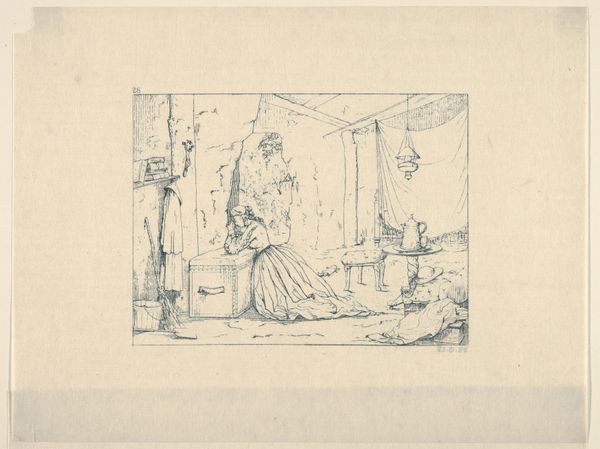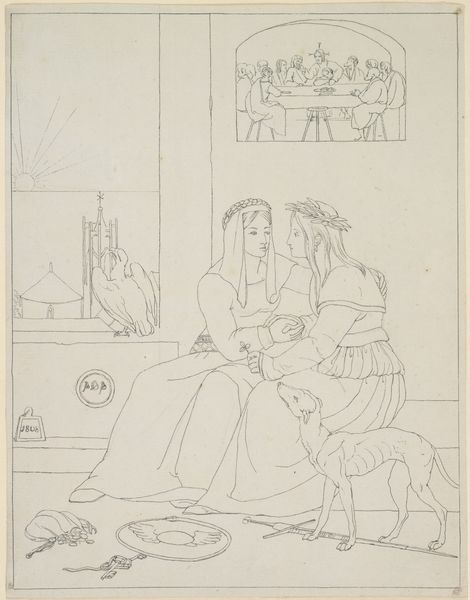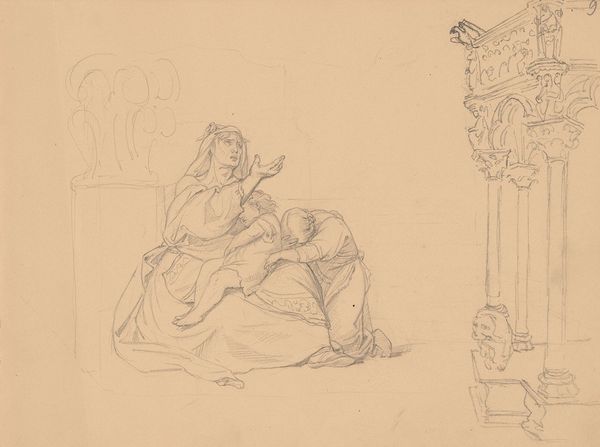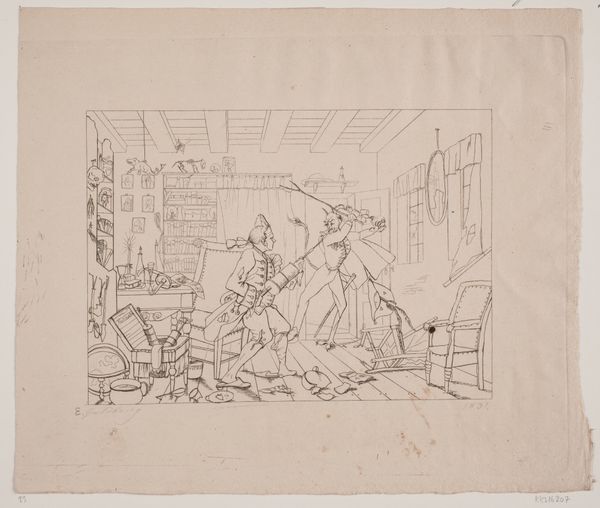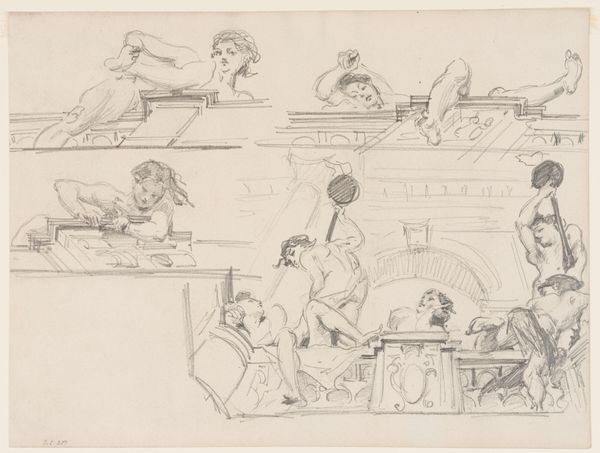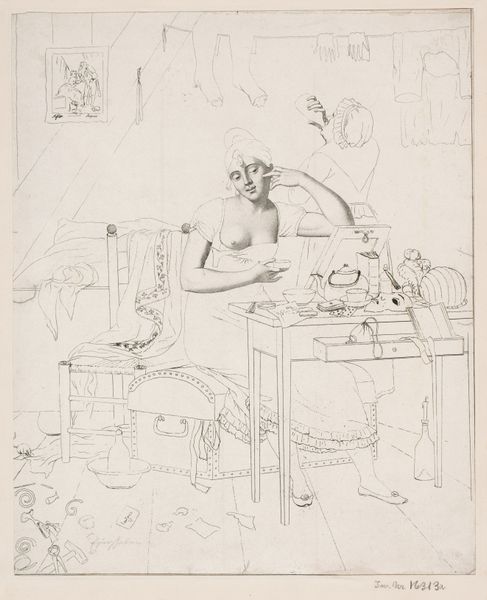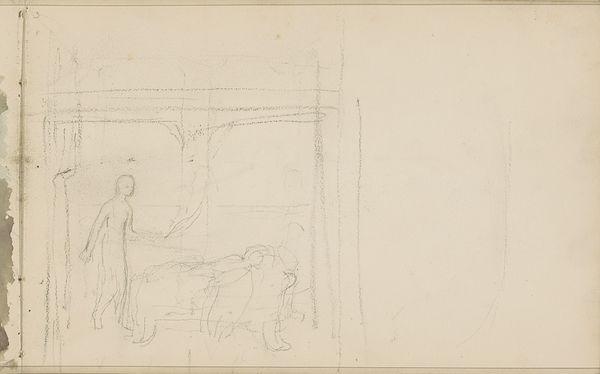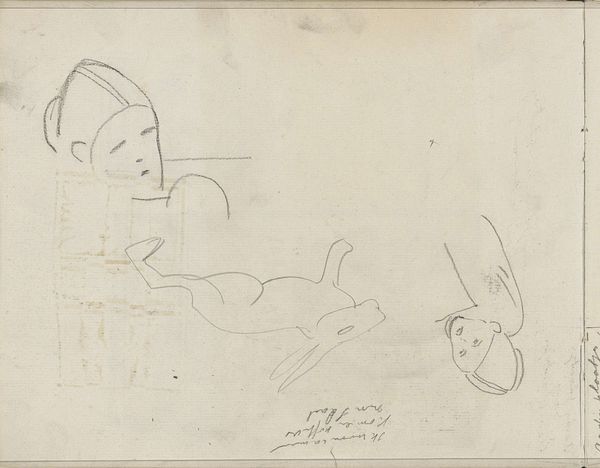
drawing, pencil
#
drawing
#
pencil sketch
#
figuration
#
romanticism
#
pencil
#
history-painting
Dimensions: 272 mm (height) x 416 mm (width) (bladmaal)
Editor: This drawing, "Den kristelige religion" from 1825 by J.F. Clemens, uses a delicate pencil medium to create a quiet, almost dreamlike scene. There's a sense of stillness and contemplation in the figure. How do you approach a work like this, particularly when considering its historical context? Curator: Let’s consider Clemens’s materials. This isn't oil on canvas displayed in a grand salon. This is a pencil drawing, accessible, reproducible. Think about who had access to art like this? What's being circulated? Is this challenging the grand religious paintings shown in churches, shifting religious experience to a personal and domestic sphere? Editor: So, you're focusing on the *making* of the image and the societal implications of using a more accessible medium. That makes me wonder about Clemens's intentions. Was he consciously making a statement by using pencil rather than a more traditional medium? Curator: Exactly! The *how* matters as much as the *what*. Pencil allowed for wider distribution through prints and copies, bringing religious iconography into everyday life. This challenges the traditionally hierarchical control over religious imagery, where access was limited and controlled. It's not just about illustrating a religious scene; it's about the democratizing potential embedded in the artwork's production. What’s being depicted matters far less to me than the act of depicting. What class of person is holding this pencil, creating this drawing and for whom? Editor: I never thought about it that way before! Focusing on the materials really opens up a new perspective. It highlights the social dynamics and the potential for subversion, even in a seemingly traditional subject matter. Curator: See? It's about looking *beyond* the immediate subject and asking what power dynamics are at play through the creation and distribution of this object. We can think about who had access to art instruction and art materials at that time, the implications that it has to do with social power.
Comments
No comments
Be the first to comment and join the conversation on the ultimate creative platform.

